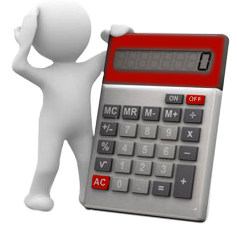
Introduction to Finance for Non-Finance Professionals
This article on Finance for Non-Finance Professionals will help you to gain basic finance knowledge, accounting concepts, and an understanding of financial statements required for a better understanding of finance.
In today’s rapidly changing business world, you must stay updated more than ever. Also, recent economic development has made it necessary for non-finance professionals to gain knowledge of finance, which will help analyze business opportunities and decisions. Regarding the current scenario, most non-finance professionals cannot understand financial risk due to a lack of knowledge.
Most non-finance professionals can run a business efficiently. Still, they fail to judge financial strength using small but significant finance techniques due to insufficient financial knowledge. It would help if you stayed updated more than ever before. Even if you are not from finance back then, you also need to understand the company’s financials, So let’s learn what it all means and what financials impact on the company. So, let’s start our learning journey with financial statements.
What do you mean by Financial Statements?
Simply, we can say that businesses record their financial or other performance in formal financial statements. Financial statements include essential information about the organization’s financials. This information is vital for shareholders, stakeholders, vendors, customers, government, and company management. Mainly, there are three basic Financial Statements.
Three Financial Statements
- Income Statement
- Balance Sheet
- Cash Flow Statement
1. Income Statement
It measures a company’s financial performance and shows profitability over a specific period. Income Statements are called Profit and Loss, Statement of Earnings, or Statement of Operations.
Recommended courses
- Financial Modeling of Apparel Sector Training
- Online Certification Training in Private Equity Modeling
- Online Certification Course in Financial Modeling of Banks
- Training in Financial Modeling and Valuation
2. Balance Sheet
The balance sheet includes companies or entities’ assets and liabilities (financial position) at the end of the day at a specific date. It is also known as a Statement of Financial Position.
3. Cash Flow Statement
A cash flow statement provides information about cash receipts and payments during a specific period of the company. It gives information on cash based on its operating, investing, and financing activities.
Some Important Basic Concepts of Accounting
Given below are the basic concepts of accounting:
 1. Asset and Liability
1. Asset and Liability
- An asset is an economic resource a company owns—for example, machinery, Land, etc.
- Liability is the legal obligation of an organization that arises from its past actions. For example, loans and accounts payable.
2. Book Value and Market Value
- Book value is the amount of an asset or liability shown on the company’s books or statements.
- Market value is the current value of the asset or liability.
3. Depreciation and Amortization
- Depreciation is reducing a tangible asset’s value over time or the useful life of the asset.
- Amortization is reducing the value of an intangible asset over the useful life of the asset.
4. Fiscal Year
A company’s financial reporting year
5. Account Receivables and Accounts Payable
- Accounts receivable are the amount the company collects or receives from their clients or customers (also called debtors) for services they have been provided.
- Accounts payable are amounts a company owes because it purchased goods or services on credit from a supplier or vendor (also called creditors).
6. Revenue and Expenses
- Revenue is sales or any income received; in simple words, it is income that flows into a company.
- Expenses are costs that are incurred or required to run a business.
Basic Accounting Equation
As an Entrepreneur or finance professional, please do not underestimate the importance of the balance sheet equation. Following is the formula for the balance sheet equation. This formula is essential:
for a better understanding of this equation, let’s take an example.
Mr. David has the following Assets and Liabilities as of 31 December 2013
Balance Sheet as of 31 December 2013
| Assets | Amount($) | Liabilities | Amount($) |
|---|---|---|---|
| Land and Buildings | 20000 | Capital | 27000 |
| Plant and Machinery | 15000 | Bank Loan | 16000 |
| Vehicles | 6000 | Creditors | 4500 |
| Debtors | 6500 | ||
| 47500 | 47500 |
Balance sheet Equation
1) Capital = Assets – Liabilities
27,000 = 47,500 – 20,500
2) Assets = Capital + Liabilities
47,500 = 27,000 + 20,500
3) Liabilities = Assets – Capital
20,500 = 47,500 – 27,000
Techniques of Financial Statement Analysis
Understand and interpret financial statements using finance techniques like ratio analysis. This technique may help you to make better business decisions.
1. Horizontal Analysis
It is a financial analysis technique in which the percentage change in the value of each line item of a financial statement is calculated in a specific period.
2. Vertical Analysis
- Shows the relationship of each item to a base amount on financial statements
- Income statement (each item expressed as a percentage of net sales)
- Balance sheet (each item expressed as a percentage of total assets)
3. Ratio Analysis
Ratio analysis is a technique used to interpret financial statements. It involves comparison for a meaningful interpretation of the financial statements. Ratios can be used to evaluate four different areas of a company’s performance and conditions
- Solvency ratios
- Operating Performance
- Risk Analysis
- Growth
Ratio Analysis – Solvency
These ratios determine the firm’s ability to pay its short-term liabilities. Following are the types of Ratio Analysis – Solvency
a) Current Ratio
This Ratio examines current assets and current liabilities. The formula for the current Ratio is
The higher the current Ratio, the more likely the company will be able to pay its short-term bills.
If the Ratio is less than 1, then it means that the company has negative working capital and is probably facing a liquidity crisis.
b) Quick Ratio
Quick Ratio adjusts current assets by removing less liquid assets. A quick ratio is a more stringent measure of liquidity than the current Ratio.
The formula for the quick Ratio is,
The higher the quick Ratio, the more likely the company will be able to pay its short-term bills.
c) Cash Ratio
The cash ratio relates cash (ultimate liquid asset) to current liabilities.
The higher the cash ratio, the more likely the company will be able to pay its short-term bills.
Finance for Non-Finance Professionals – FAQs
Q1. I am an entrepreneur. Can I analyze my business balance sheet using Financial analysis techniques?
Answer: You can analyze your business balance sheet using ratio analysis.
Q2. I am from a non-finance background. Can you provide me with free finance training material to help me learn basic accounting?
Answer: Many online portals provide free training material; however, don’t be confused. Select the right one and quality courses. Get free finance training material for non-finance professionals.
Q3. Hello, will you please recommend an online finance course, because I am a working professional in the IT sector and don’t have enough time for classroom training? Please suggest the best course so I can understand the basic finance concepts from scratch.
Answer: If you are new to finance, choose an online course that includes fundamental concepts from scratch. For professionals like you, online courses are beneficial. It would help if you attended an online Finance for Non-Finance Professionals course.
Finance for Non-Finance Professionals Infographics
Learn the juice of this article in a minute – Infographics of Finance for Non-Finance Professionals.
Recommended Articles
Here are some articles that will help you get more details about Non-Finance Professionals, so go through the link.
 1. Asset and Liability
1. Asset and Liability
